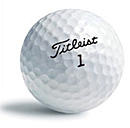First, let me apologize for being about 4 days late in publishing. I've got excuses like a new kitchen countertop, busted toilet and a clogged kitchen sink. Anyone out there any good at cutting cast iron pipe? BUT, there's a payoff. I'm actually going to tell you how to improve at golf. Worth the wait, right? Time will tell.
Maybe there's no silver bullet for becoming a better golfer, but I think there are some basics that can help most anyone. The bigger question is - will you do it? I mean losing weight is easy for most people - just eat fewer calories than you burn up. But, but, but........there's always a but.
In no particular order, here's my guidance. Work on tempo. However you swing, fast or slow, make sure your tempo is the same on the backswing and downswing. Count to yourself, use a metronome, sing a tune in your head. Just manage the tempo. That goes for every club in the bag including the putter. While you are out on the course make consistent tempo your goal.
Mind set - means give your mind very specific tasks while on the course, the practice range is a different matter. The old bean is good for strategy and it's good for observing. How do I feel, am I comfortable, am I remembering that it's just a game, look at the beautiful sunset, how does the grip feel in my hands. You get the idea. Just don't let it start giving you swing instructions. If you want to know more about how to use and not use the mind in sports, try reading something by Tim Gallwey.
Find out what's really going on in the golf swing. There are millions of books with millions of suggestions and I think most will confuse you on the basic swing. Try checking out Carl Rabito, his website is www.rabitogolf.com. I don't know the guy and I don't get any money from him. I've only recently discovered him, but I think his modern scientific approach to golf gets as close to the 'truth' about the swing as anyone. And it looks pretty simple. Know how the knees, hips and torso move in relation to each other (the torso must move faster than the hips on the downswing because they have further to go). The arms are almost passive. Know what the correct wrist cock is.
Want to use some science to understand the short game, take a look at Dave Pelz's stuff. He is 'the man' on the short game. He used to work for NASA many years ago and has used a scientific approach to understand what really works and what doesn't. He's helped many of the top pros, just ask Phil. Again, I have no connection with him. Hell, I don't have a connection with anyone in golf for that matter so I'll stop adding that in.
Swing a club every day. Four or five minutes is enough, but do it every day. It's kind of relaxing. Almost as good as a martini for unwinding. Swing a weighted club every other day, it will help build your golf muscles and might even help stretch them out.
Know about the adrenalin effect we talked about last Thursday. When you step up to that first tee, you're going to have some of it flowing through your veins and it will effect your swing. The more you swing with your torso - the big muscles - the less it's effect will be.
Video yourself if possible and then compare it with a good golfer's swing. There are lots of tools for doing this. You can do it online at www.V1golf.com. I haven't them, but it looks like a professional operation.
Once you start playing a real round of golf, 'dance with who brought you'. In other words, use whatever swing shows up, don't go trying to correct everything during your round. And have fun, unless you play golf for a living. That's what we go into the coal mines everyday for. It would be a shame to waste those precious days off just making ourselves miserable! Work does that for most of us, so don't let it on the course.
Tomorrow let's look at the controversy regarding the pros hitting the ball too far and whether it makes sense for them to play a different ball. We indirectly pay them so why shouldn't we have a say!

















